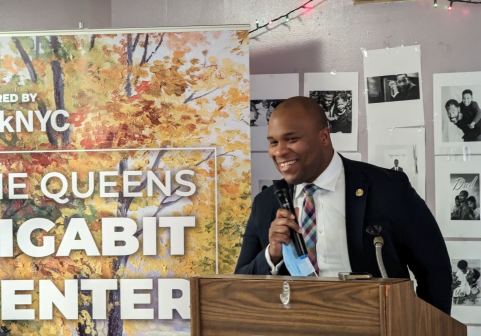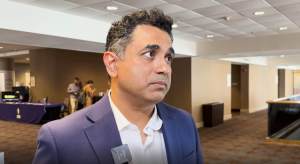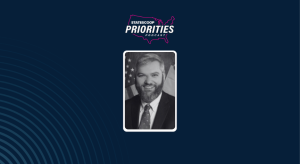Broadband access advocates kick off push to bring gigabit speeds to anchor institutions

Libraries, schools and health care facilities need to band together and work with every level of government to solve the complex issues surrounding high-speed broadband connectivity, according to a new set of policy papers from an internet access advocacy group.
The Schools, Health and Libraries Broadband Coalition — a group representing the aforementioned “community anchor institutions,” as well as private companies and internet-focused nonprofits — released its new “Broadband Action Plan” Wednesday. The document contains 10 research papers detailing strategies for getting anchor institutions access to gigabit internet speeds to enable the deployment of the latest technological innovations nationwide.
“Rural schools and libraries continue to have trouble with broadband access, and the broadband needs of public housing, tribal nations and community colleges continue to remain unserved or underserved,” John Windhausen, the coalition’s executive director, said at an event unveiling the plan. “We need to address these broadband gaps. So this is not just an academic paper, we don’t want this to just go on your shelf.”
The action plan is part of the coalition’s broader “Grow2Gig+” initiative, a push to connect all anchor institutions to gigabit speeds by 2020.
That goal mirrors the objective the Federal Communications Commission laid out in its 2010 “National Broadband Plan,” with the commission hoping to get every institution access to speeds of 1 gigabit or more by the same deadline. Accordingly, Gigi Sohn, counselor to FCC Chairman Tom Wheeler, hailed the coalition’s effort as crucial for the federal government to embrace.
“We’re a federal agency, we don’t have the kind of relationships in communities that you do,” Sohn said. “Successful programs come from the bottom up, not the top down.”
While each paper in the action plan touches on a different subject, Windhausen noted that they tend to cluster around the same three themes: the value of collaboration, the importance of competitive connectivity options and the need for funding to make broadband projects happen.
He believes that the community institutions themselves can look to these sorts of policy recommendations, but the other consultants on the plan in attendance also stressed the value of the participation of state and local governments in the process of increasing broadband adoption.
Specifically, Joanne Hovis — the president of the consulting firm CTC Technology & Energy — argued that governments at all levels need “policies that facilitate collaboration.”
“Having more parties together facilitating the building and enabling of networks is better in every way,” Hovis said. “There can be more creativity, lots of leveraging of local capacity, aggregating buying power. All of that creates better prices, better networks.”
[Read more: Prepare for pushback, experts tell communities building municipal broadband networks]
Indeed, she believes state governments in particular can play a “critical role” in rallying various institutions to use their collective purchasing power. She specifically praised New Mexico’s work to do just that for its schools, focusing on its “statewide planning efforts to ensure better bandwidth and better per unit pricing.”
Angela Siefer, director of the nonprofit National Digital Inclusion Alliance, agreed. She even used North Carolina’s new broadband plan as a key example of the role a state government can play in coordinating anchor institution efforts, since the plan recommends that the state name a coordinator for all schools hoping to apply for connectivity funding through the FCC’s “E-Rate” program.
“Local and state governments should have staff specifically designated to work on digital inclusion and work with providers in schools and other anchor institutions,” Siefer said. “If you don’t have somebody to pull everyone together, then how does everyone get together?”
Susannah Spellman, the executive director of the United States Unified Community Anchor Network at Internet2 — a research network of universities, corporations and government agencies — thinks that sort of collaboration is important, but she charged that it could come from schools, libraries and hospitals doing the work of uniting themselves.
“It’s even more powerful if all the different institutions came together,” Spellman said. “This model can work, and it’s something our anchor institutions should leverage across sectors.”
In a similar vein, Tom Koutsky — chief policy counsel for the nonprofit Connected Nation — feels the action plan can provide a roadmap for anchor institutions to rally around as they weigh which policies to lobby their governments to adopt. His paper in the plan encourages institutions to push for things like “dig once” policies where governments mandate that anyone building something like a road install fiber infrastructure at the same time.
“Anchor institutions should be advocates for those policies at the local level,” Koutsky said. “We can bring them around this set of things to then bring their city councils.”
Yet many of the experts stressed that any of these policies could prove meaningless if people don’t appreciate the value of high-speed internet. In particular, Sohn pointed to her experience in Kansas City, where she observed Google Fiber and the federal Department of Housing and Urban Development struggling with their program to bring free gigabit internet to public housing communities.
“Even though it was free, people wouldn’t accept it,” Sohn said. “They didn’t trust it.”
Accordingly, she sees anchor institutions playing a vital role in helping provide people who previously didn’t have access to these sorts of speeds with an introduction to the value of high-speed service with education programs and outreach efforts.
“I think folks understand that access to technology is no damn good if folks don’t know how to use it,” Sohn said.





